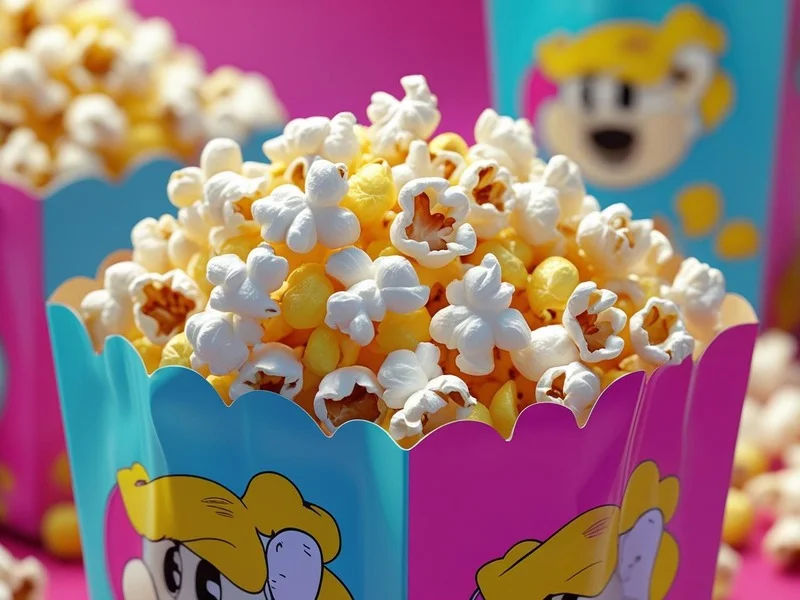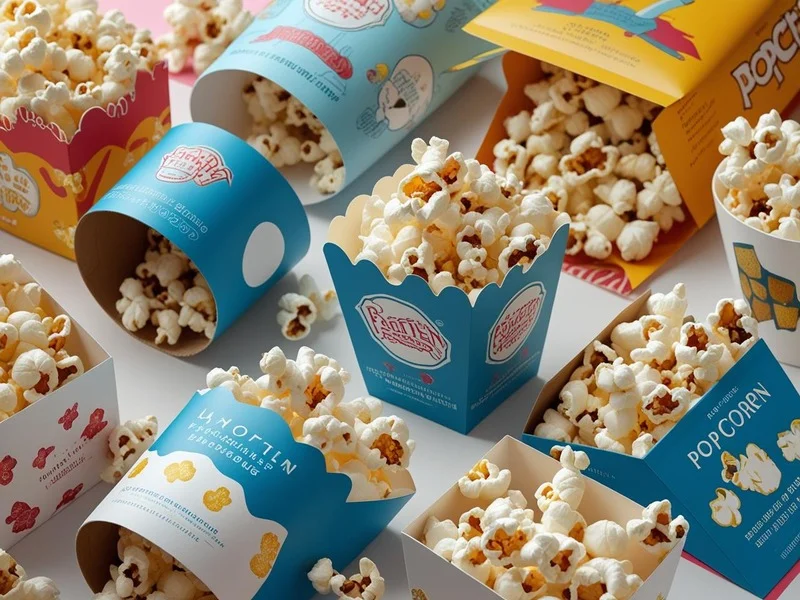In 2025, consumers care more about eco-friendly packaging than ever before. Popcorn, a popular snack, is no exception. Shoppers want sustainable options that align with their values. This article explores what consumers expect from eco-friendly popcorn packaging, why it matters, and how brands can meet these demands. We’ll cover trends, materials, and practical tips for businesses to stay competitive.
Why Eco-Friendly Packaging Matters in 2025
Sustainability is a top priority for consumers. A 2025 study shows 70% of shoppers consider a brand’s eco-friendly efforts when buying. For popcorn, packaging plays a big role in purchase decisions. Plastic waste concerns drive demand for greener options. Brands that ignore this risk losing customers.
- Environmental Impact: Plastic packaging takes centuries to decompose, harming ecosystems.
- Consumer Trust: 90% of shoppers prefer brands with sustainable packaging.
- Regulatory Pressure: New laws push companies to reduce single-use plastics.

Consumer Expectations for Popcorn Packaging
Consumers want packaging that’s sustainable, functional, and visually appealing. Here’s what they expect in 2025:
1. Biodegradable and Compostable Materials
Shoppers favor packaging that breaks down naturally. Popcorn packaging made from plant-based materials, like cornstarch or paper, is popular. These options reduce landfill waste and appeal to eco-conscious buyers.
- Example: Lush uses air-popped popcorn as a lightweight, compostable filler. It breaks down in compost bins without residue.
- Benefit: Biodegradable packaging reduces greenhouse gas emissions and resource depletion.
2. Recyclable and Reusable Options
Recyclable packaging is a must. Consumers want bags or pouches they can recycle easily. Reusable packaging, like resealable stand-up pouches, also gains traction for convenience.
- Stats: 50% of consumers recycle often, and 87% would buy sustainable products if easier to find.
- Trend: Brands like Tiny But Mighty use recyclable stand-up pouches with clear windows to show off kernels.
3. Minimalist and Frustration-Free Design
Consumers dislike excessive packaging. They want lightweight, easy-to-open designs that use minimal materials. This reduces waste and shipping costs.
- Trend: Frustration-free packaging, like Amazon’s, uses minimal materials and is easy to open.
- Consumer Feedback: 46% of shoppers are frustrated by excessive empty space in boxes.
4. Transparency and Sustainability Messaging
Shoppers want clear labels showing eco-friendly credentials. Terms like “100% biodegradable” or “made from recycled materials” build trust. Younger consumers, like Gen Z and Millennials, are especially drawn to transparent brands.
- Data: 20% of shoppers avoid products without sustainability labels.
- Example: 479 Popcorn uses clean, white packaging with calorie counts and eco-labels to appeal to health-conscious buyers.
Emerging Trends in Eco-Friendly Popcorn Packaging
Based on top-ranking websites and Google’s “People Also Ask” data, here are key trends shaping 2025:
- Popcorn as Packaging Material: Research from the University of Göttingen shows popcorn can replace polystyrene. It’s biodegradable, water-repellent, and made from corn by-products.
- Smart Packaging: 75% of consumers are interested in packaging with sensors to track freshness. QR codes for recycling info or discounts are also popular.
- Gourmet Appeal: Premium brands use eco-friendly packaging to highlight artisanal flavors, like truffle or coconut oil popcorn.
How Brands Can Meet Consumer Expectations
To succeed in 2025, popcorn brands must align with consumer values. Here are actionable steps:
- Switch to Sustainable Materials
- Use biodegradable options like cornstarch-based PLA or paper.
- Partner with suppliers like EcoEnclose for compostable solutions.
- Test popcorn-based packaging for protective inserts, as seen with Nordgetreide.
- Optimize Packaging Design
- Choose lightweight, collapsible pouches to reduce shipping emissions.
- Add resealable zippers for multi-use convenience.
- Use minimal inks and dyes for a clean, eco-friendly look.
- Communicate Sustainability Efforts
- Add clear labels like “100% compostable” or “recyclable.”
- Use QR codes to share sustainability stories or recycling tips.
- Highlight ethical sourcing, like non-GMO corn, to appeal to conscious consumers.
- Educate Consumers
- Include composting or recycling instructions on packaging.
- Create blog content or videos on sustainable practices.
- Engage Gen Z and Millennials on social media with eco-friendly campaigns.
Challenges and Solutions
While eco-friendly packaging is promising, challenges exist:
- Challenge: Limited chemical recycling capacity slows progress.
- Solution: Invest in partnerships with recycling innovators to scale solutions.
- Challenge: Higher costs for sustainable materials.
- Solution: Highlight long-term savings from consumer loyalty and regulatory compliance.
Why Popcorn Packaging Is a Game-Changer
Popcorn itself is a sustainable crop. It’s low-calorie, high-fiber, and often non-GMO. Using its by-products for packaging, like Nordgetreide does, creates a circular economy. This aligns with consumer demand for eco-friendly, innovative solutions.
Conclusion
In 2025, eco-friendly popcorn packaging is a must for brands. Consumers expect biodegradable, recyclable, and minimalist designs. They also want transparency and smart features like QR codes. By adopting sustainable materials, optimizing designs, and communicating clearly, brands can build trust and loyalty. Start now to meet these expectations and stay ahead in the competitive snack market.

